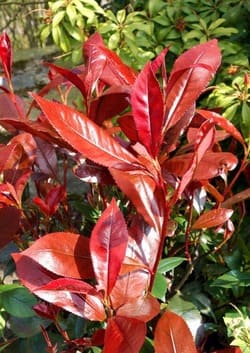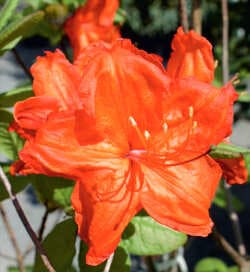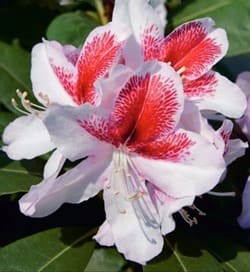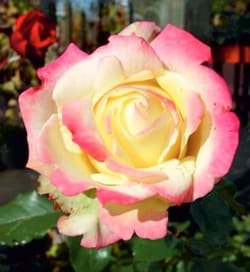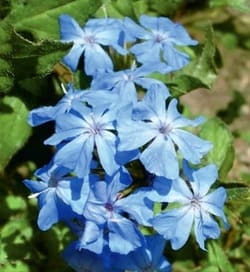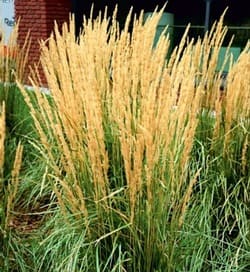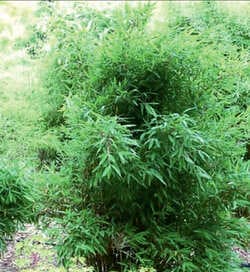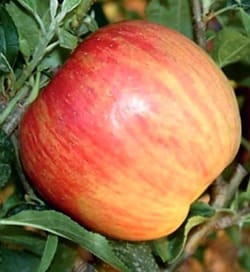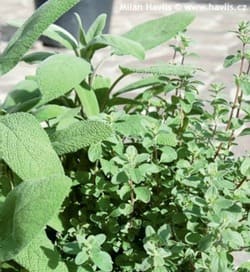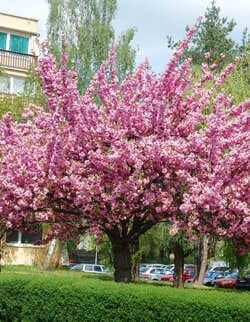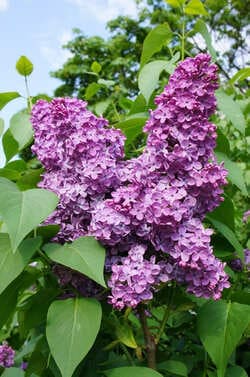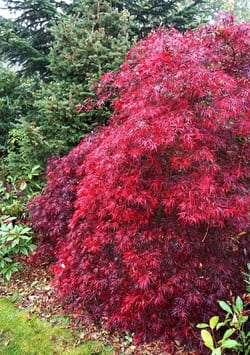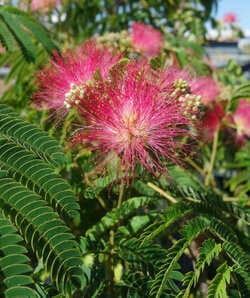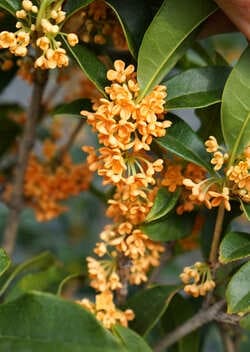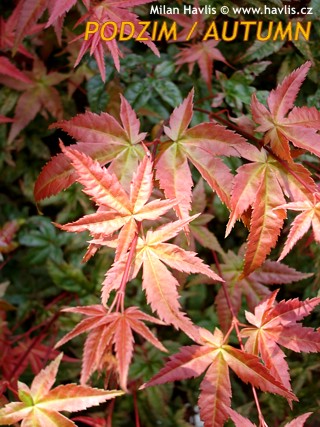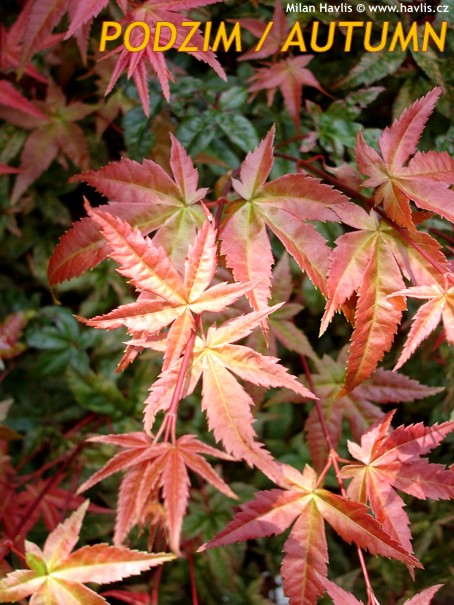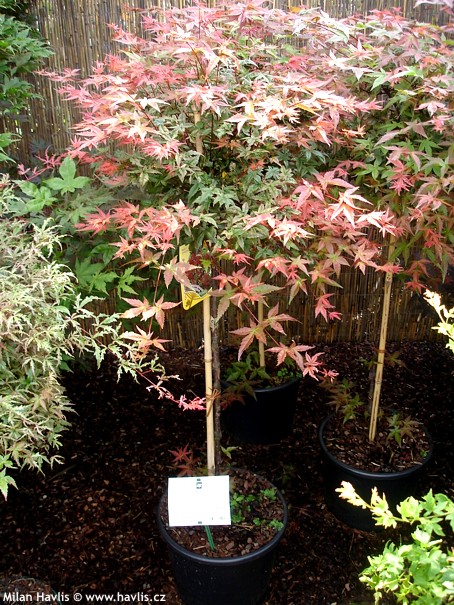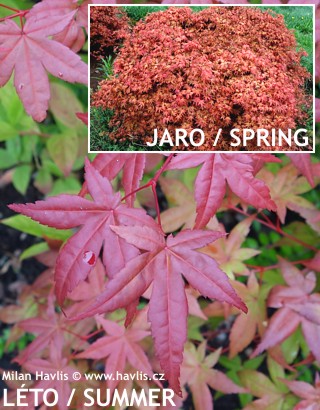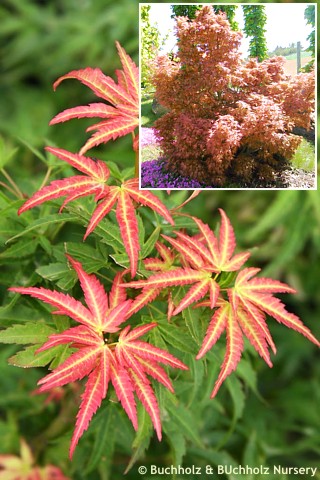Acer palmatum 'SHINDESHOJO' Japanese maple
Acer
Japanese maples are very decorative and usually low shrubs, occasionally small trees, with attractive foliage and picturesque structure. There are many varieties in various shades of green, chartreuse, golden and yellow, red to maroon, and even multicoloured (variegated). They originate from Asia (Japan, China, Korea), where they have been cultivated for at least two centuries or perhaps even longer, however, they were introduced to Europe only at the beginning of the 19th century, specifically to Great Britain in 1820. Interestingly, the botanist Carl Peter Thunberg described them much earlier, in 1784, because he undertook an expedition to Japan in 1775-1776, discovering new species and collecting seeds and plants. He named the tree Acer palmatum, referring to the leaf shape resembling a human hand with fingers, although it is said that they first reminded him of frog fingers, which is also one of its oldest Japanese names: kaede. The other is momiji (baby hands). The beauty of the colours and shapes of the leaves and trees is reflected in many arts, for example, in the oldest preserved collection of Japanese poetry from the 8th century, the Man'yōshū (Collection of Ten Thousand Leaves). The Chinese poet Wang Wei (699-759) celebrated their beauty in many of his works, and naturally, maples often appeared in ancient paintings, tapestries, porcelain, and wherever classic and traditional decorations associated with the symbolism of these maples were desired: beauty and elegance, serenity, endurance, vitality, and transformation.
Shindeshojo is a classic variety of Japanese maple that offers exactly what these plants are popular for: bright colours of spring and autumn foliage. Shindeshojo has palmate, 5- or 7-lobed deciduous leaves which emerge fire engine red in spring, turn olive green with pink and white speckles in summer, and change to golden orange and red again in autumn.
It grows slowly about 2m tall and wide. Pruning is not needed as it forms a dense and compact shrub even when young. It is an easy-care, hardy plant, which does not need much maintenance. For best leaf colouring it needs plenty of sun so make sure the roots are well mulched, too.
Japanese maples prefer acidic to neutral soil, moist but well drained, semi-fertile. Owing to its reduced size it is suitable for small gardens and front yards, too. Fully hardy to -29 °C (USDA zone 5).
Last update 20-02-2010









